About a year and a half ago, I mentioned that I’d like to visit Walter Pall’s garden. The message got through to Walter (thanks, Jennifer!), and last week I was able to make the trip a reality.
Each summer Walter conducts a master class for students and friends at the Bonsaigarten Munich, a public bonsai garden and nursery created by Thomas Haering in the small Bavarian town of Zorneding, just outside of Munich.
The group meets a few times a year in different cities around Europe. The most recent session brought together Jennifer Price (USA), Andy Bello (USA), Lukas Sirotny (Czech Republic), Maros Belan (Slovakia), Kestutis Gailius (Lithuania), Andrija Zokic (Croatia), Thomas Haering (Germany), and Walter’s helper Benedikt Schwabl (Germany).
The format of the class is simple – everyone works on one of Walter’s trees and the group discusses the work before and after it is completed. Most of the material is collected European conifers with a handful of imported Japanese conifers. The work ranges from initial stylings to refinement of mature imported specimens.
I arrived on a Friday straight from the airport a few hours after the group got started. Already the trees were taking shape.
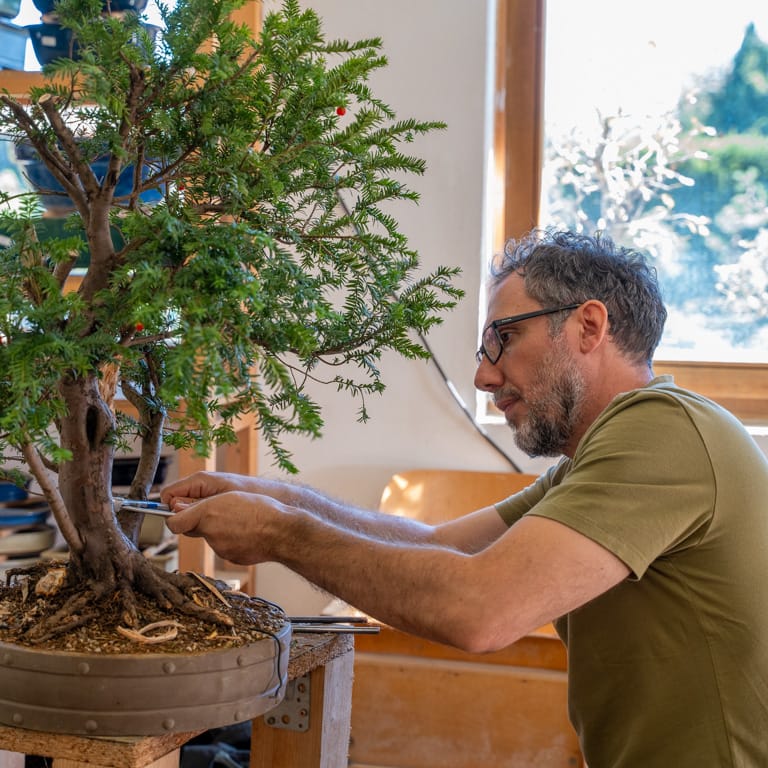
Andrija carving deadwood
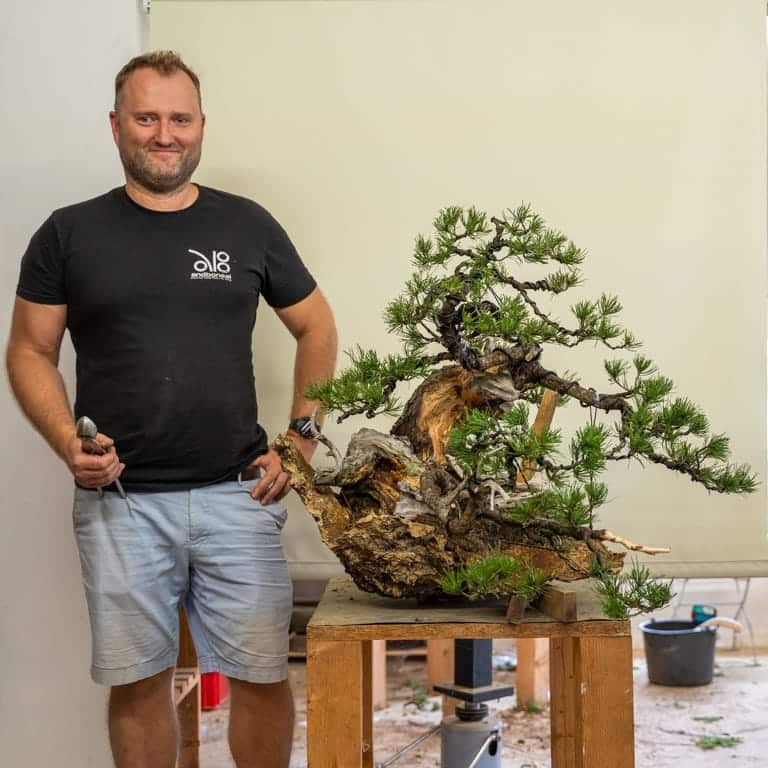
Kestutis and a mugo pine (2nd styling)
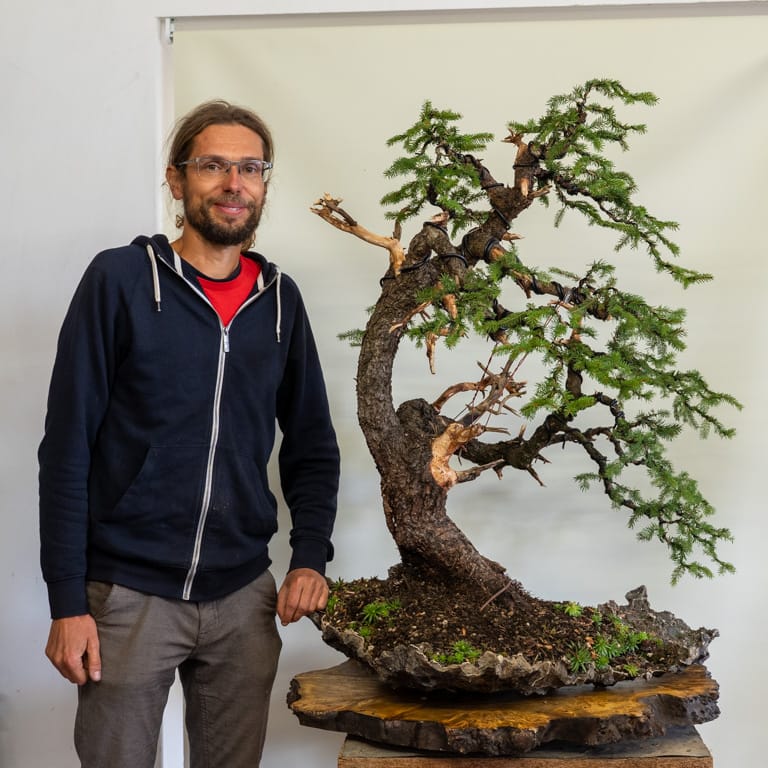
Lukas and a European spruce
Right in the middle of the room was a beautiful Japanese hemlock planted on an artificial stone. Walter had selected the tree so I would have a fun project to work on over the weekend.
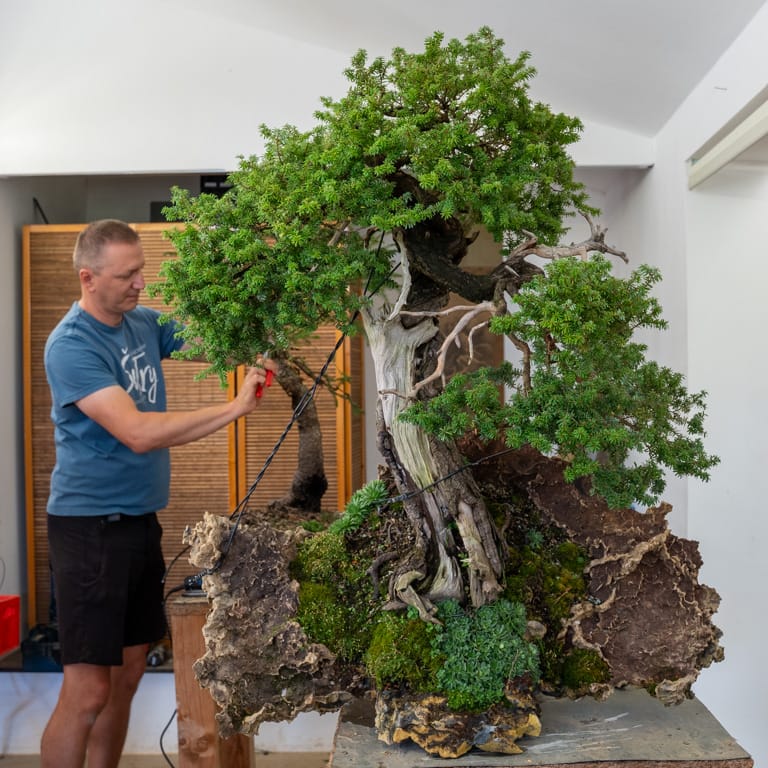
Japanese hemlock
At times the workshop got crowded. Visitors to the garden – up to ten at a time – would wander through the space as we worked giving the event a lively feeling. Most of the visitors spoke at least some English and didn’t hesitate to ask participants questions as they worked.
The real highlights of the session, beyond making friends and working on great material, came when we gathered to discuss the work. This typically began with the stylists describing what they did to a given tree and what the plan would be going forward.
Lukas had brought a batch of 8 Euro (about $9.40) field-grown yew that made for interesting studies of how to handle rough material.
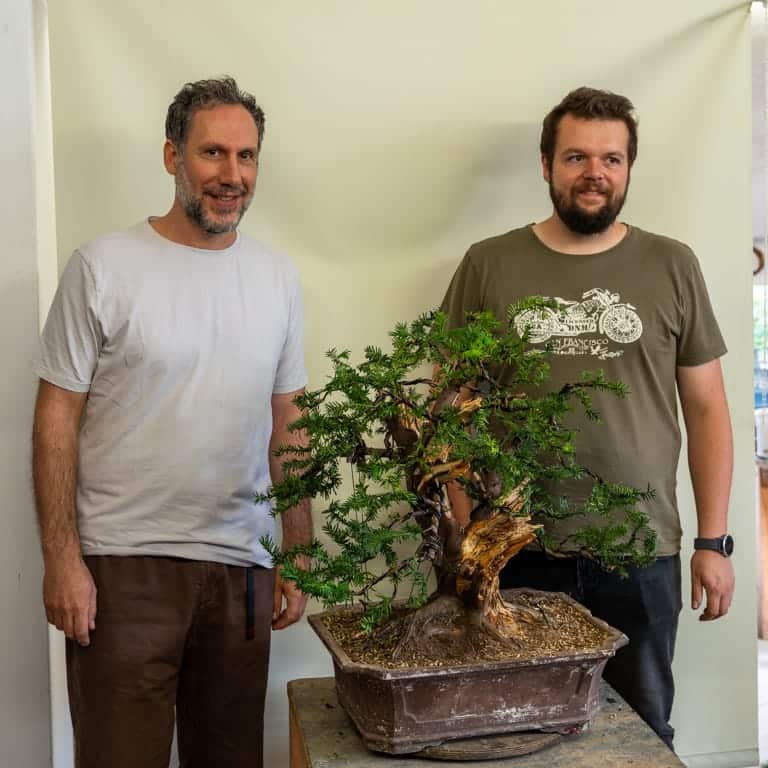
Andrija and Benedikt discussing a field-grown yew
Walter followed these presentations with suggestions for further development or stories about the tree’s histories.
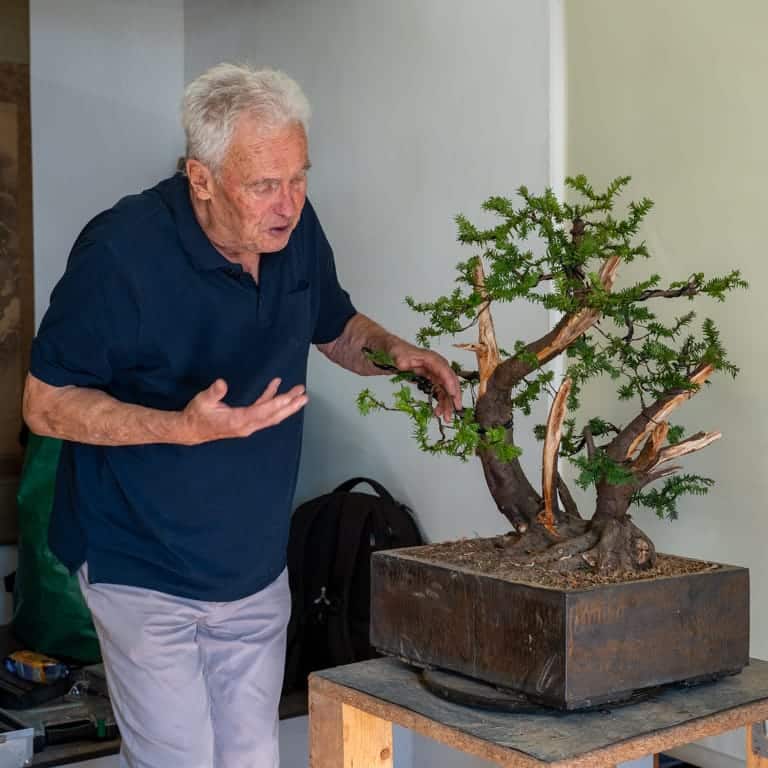
Walter discussing design options
Some of the stories were unexpected. The European spruce below was collected by Randy Knight years before and has since been maintained by Walter. The tree was one of several styled by Jennifer Price over the weekend.
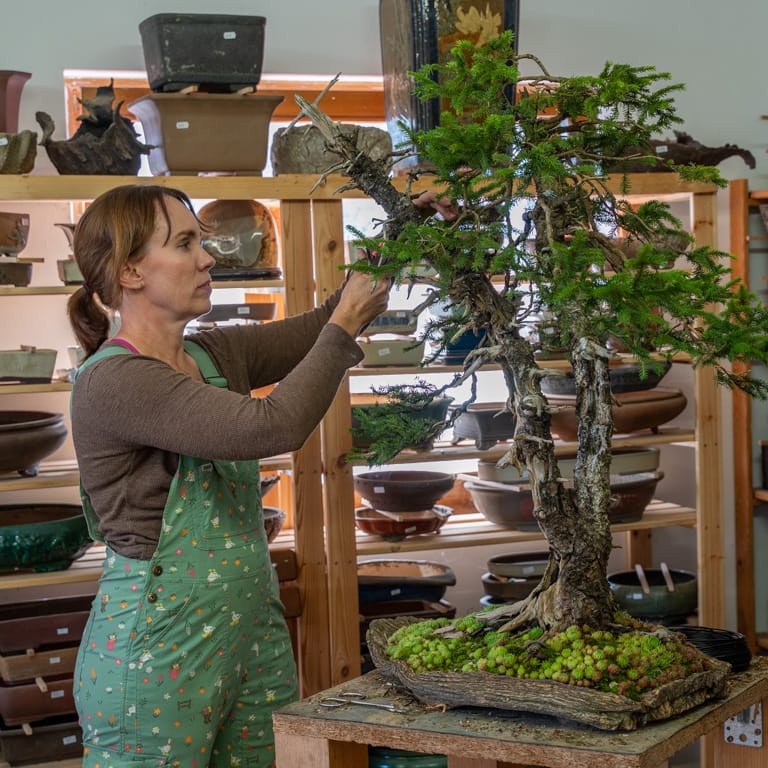
Jennifer styling a spruce
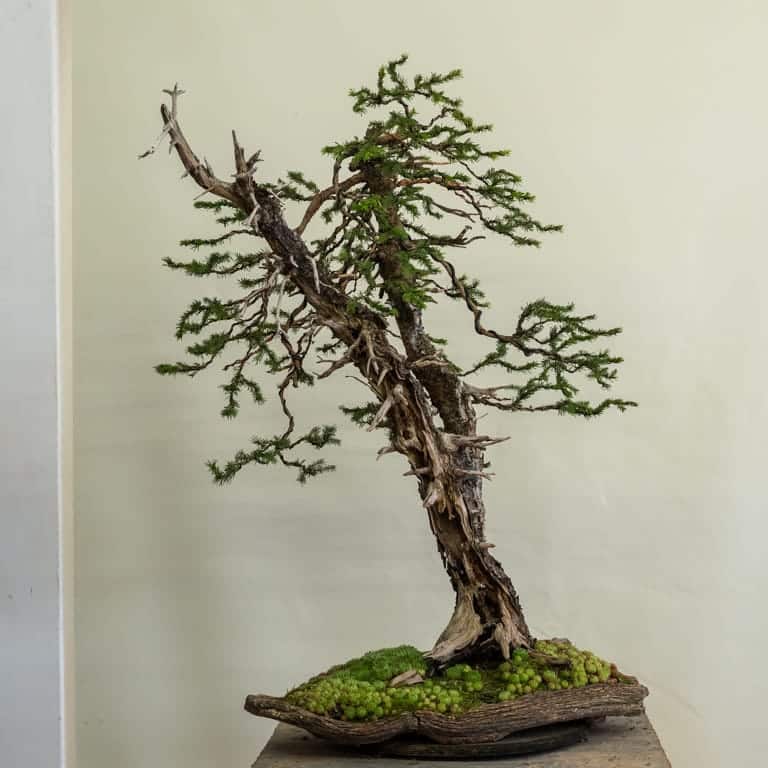
Initial styling complete
A common refrain that came up during Walter’s critiques was that a lot of the material presented “flaws” that made the trees good candidates for less conventional styles. Many had dead central leaders with one or more side branches which had started to grow upward in its place. The result was often a bonsai with multiple apices.
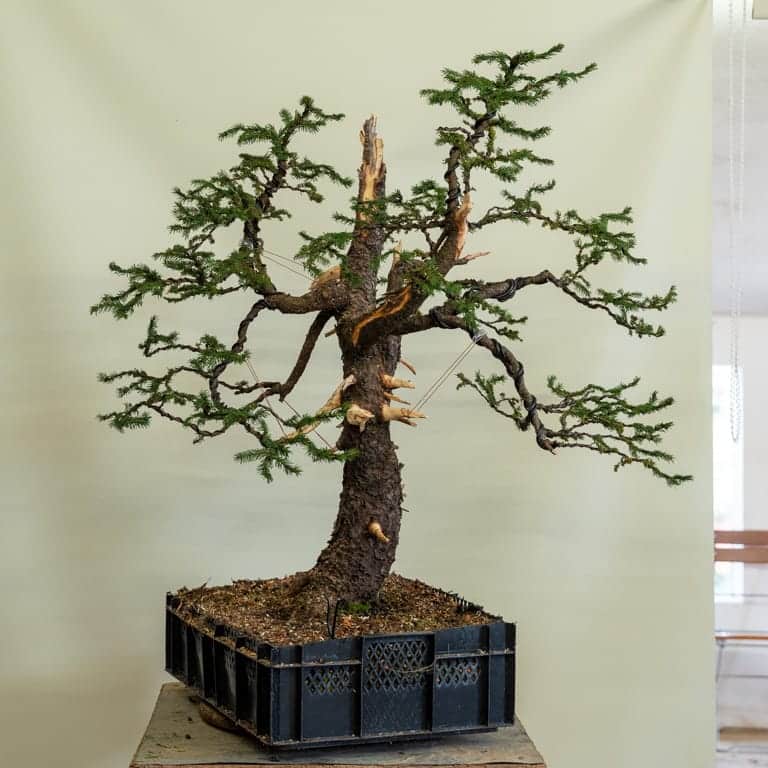
Spruce with a dead central leader
For some participants, the event was an opportunity to refine skills that didn’t come up in their daily bonsai practice. This was definitely the case for Andy Bello. Andy is the Assistant Curator at the US National Bonsai and Penjing Museum where maintenance and refinement tasks are more likely to fill his days than initial stylings.
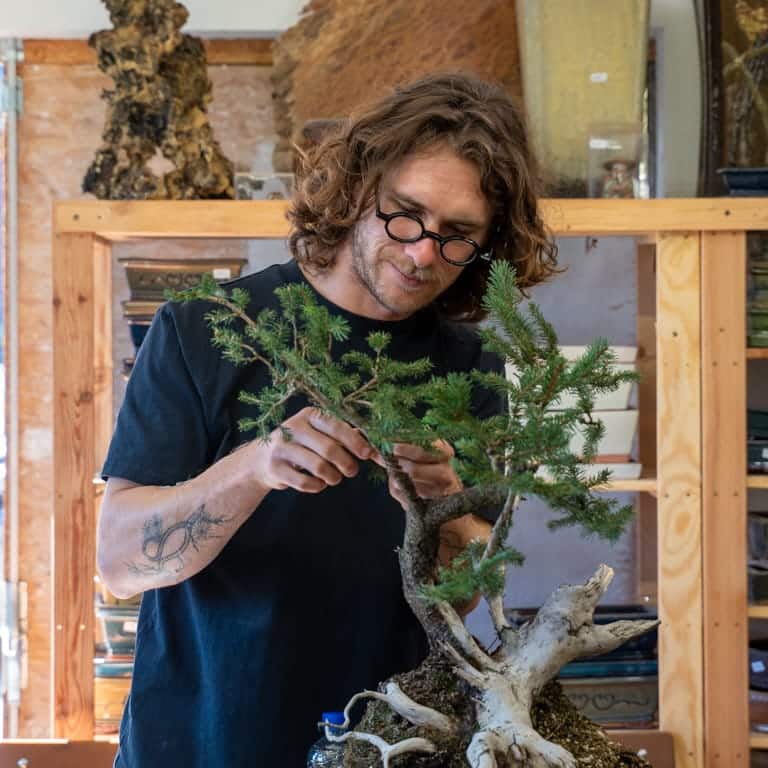
Andy styling a collected spruce
Andy also had the opportunity to style a fantastic pine.
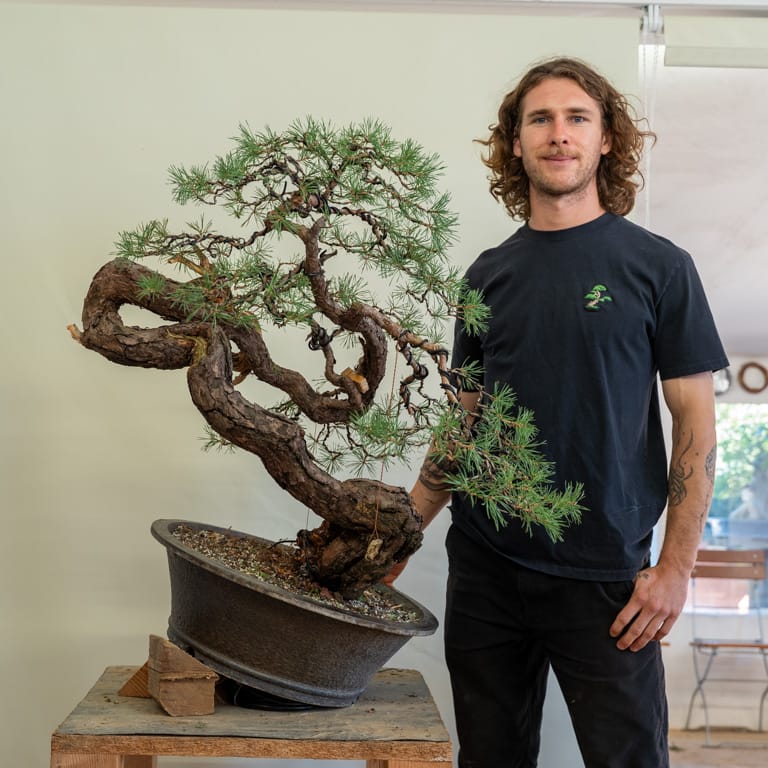
Andy Bello
My work on the hemlock entailed moving the top and back branches to give the tree more depth and then thinning the foliage to ensure the lower branches received adequate light. The tree will be due for more detailed work after it recovers from this year’s work.
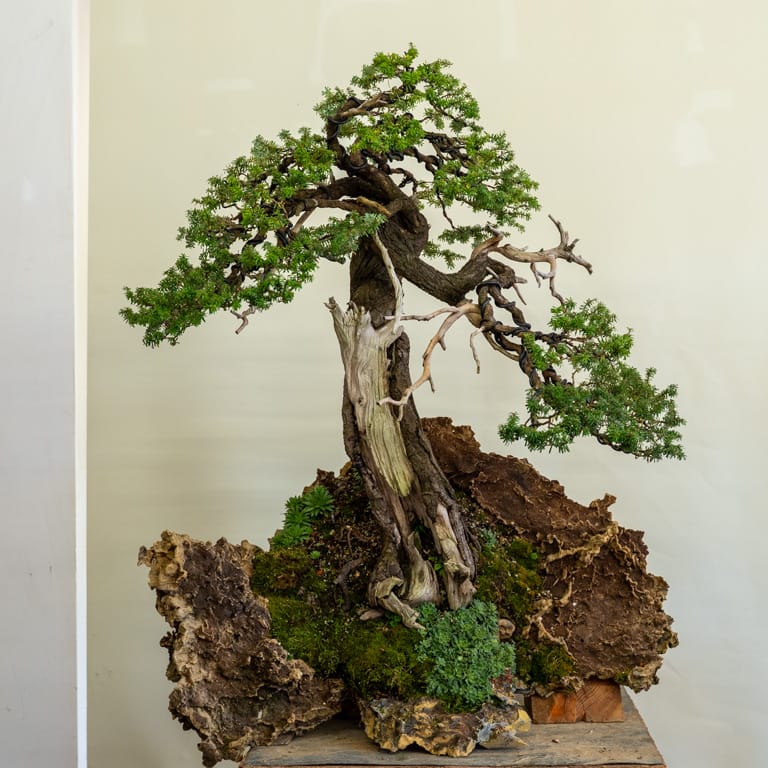
Japanese hemlock
It was a treat for me to see so many European natives. European spruce, mugo pine, and Scots pine are more likely to be nursery grown in the US so it was fun to see collected specimens in person.

Cembra pine
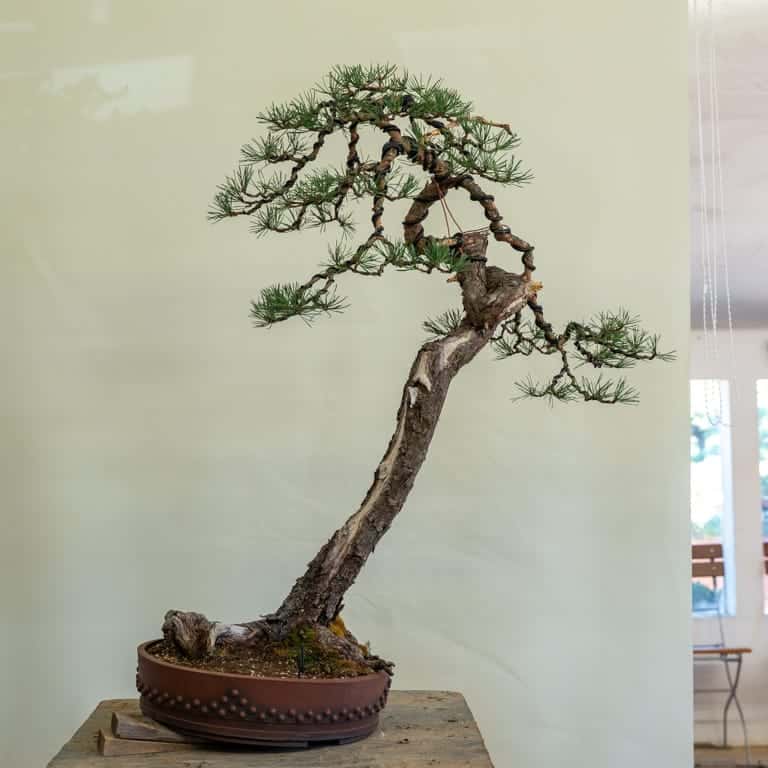
Scots pine
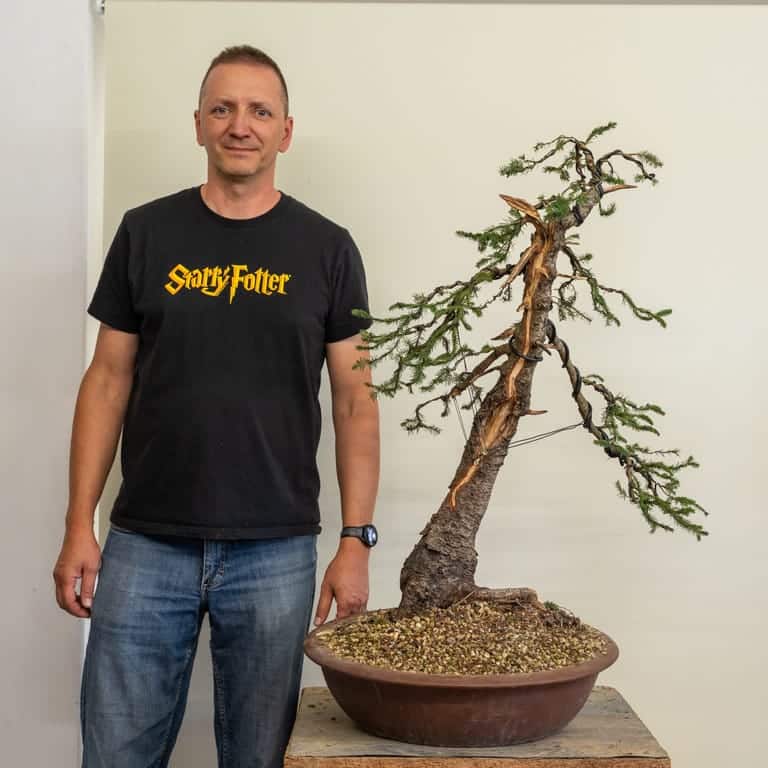
Maros and a European spruce
Maros Belan is a Slovakian YouTuber – you check out his channel here.
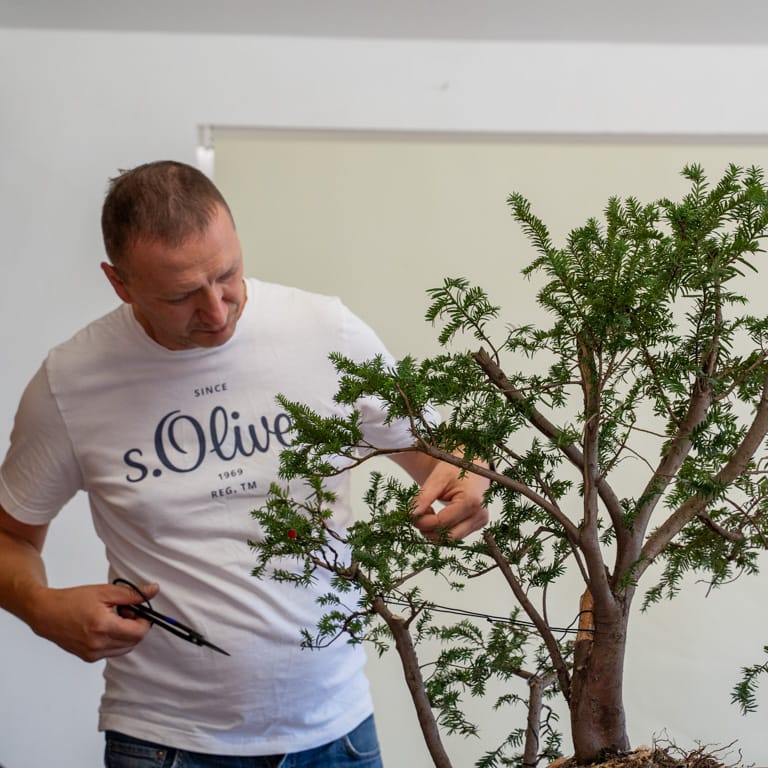
Maros working on a yew
By the end of the weekend, Walter couldn’t resist joining in. His assistant Benedikt was working on an old spruce that was due for cutback.
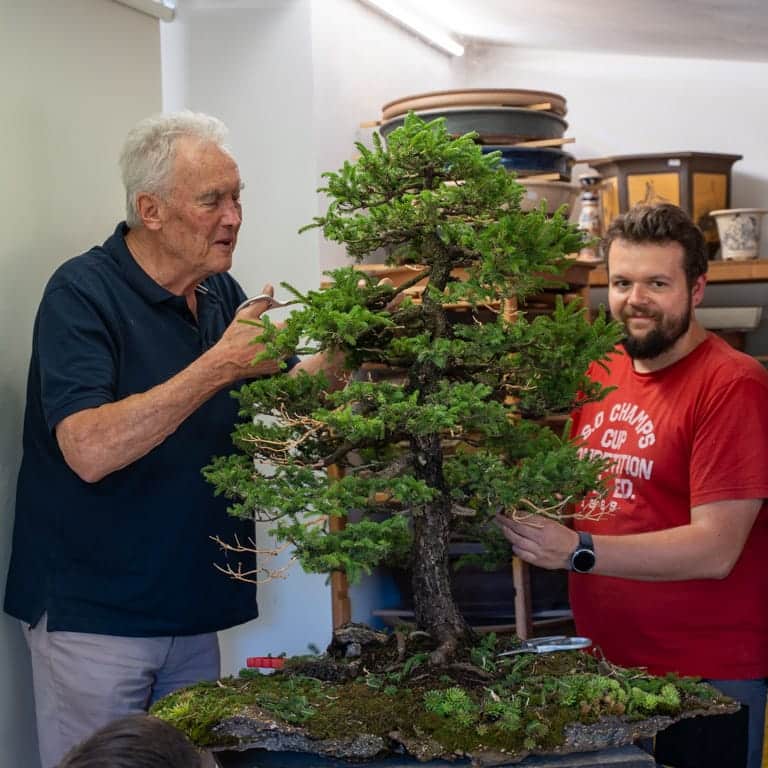
Walter and Benedikt
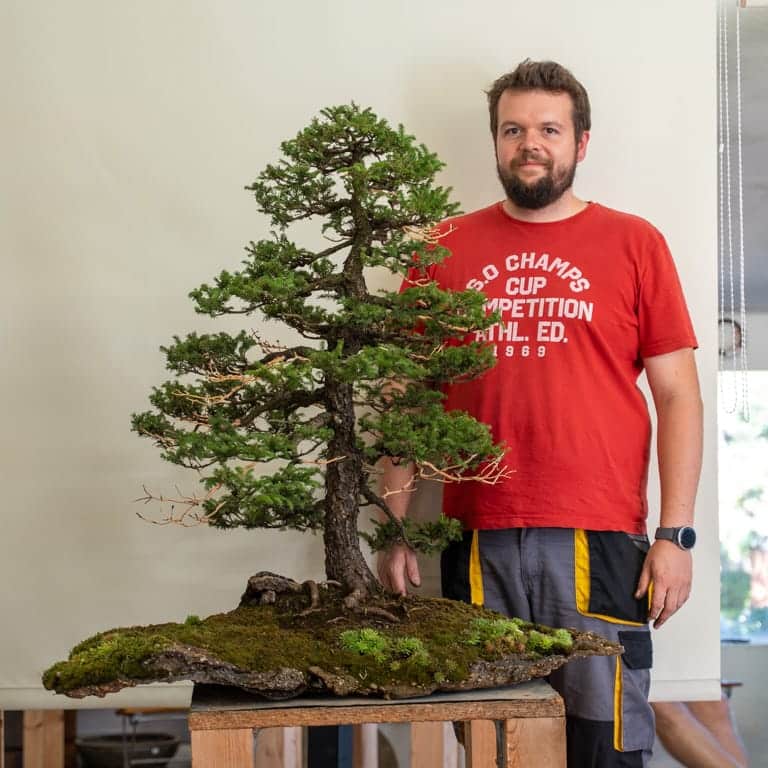
Benedikt showing off the result
Although it was sad for me to get to the end of the weekend, most of the other participants were already planning the next master class for a weekend in the Czech Republic at Lukas’ garden. I don’t know when I’ll get the chance to visit the group again, but I’ll be looking forward to it when I do!
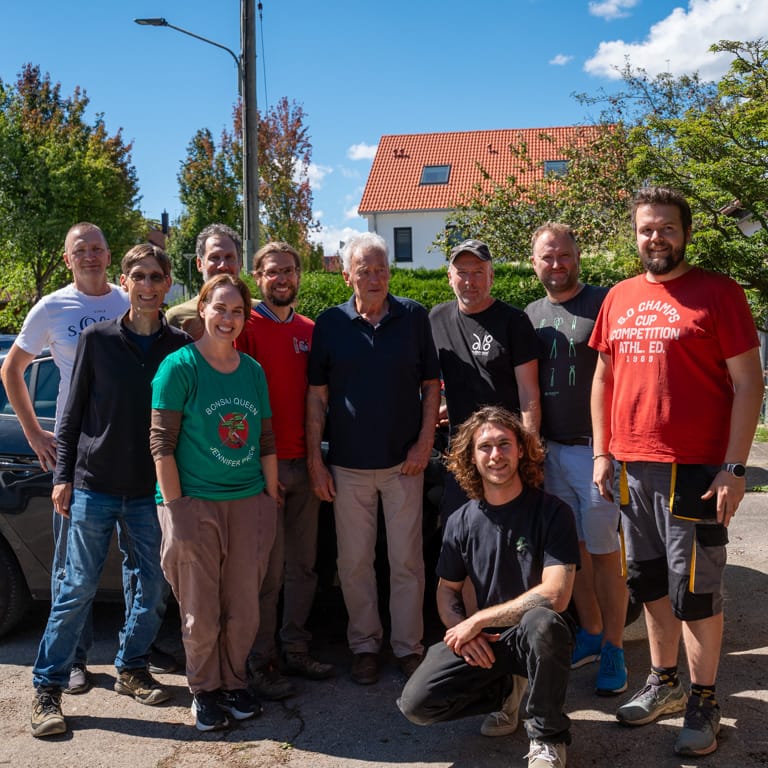
The 2025 summer Master Class: Maros, Jonas, Jennifer, Andrija, Lukas, Walter, Thomas, Andy, Kestutis, and Benedikt
News & Updates
[New Podcast Episodes]
- During my visit to Germany, I had the opportunity to interview Walter for the Bonsai Wire podcast. You can catch the discussion wherever you listen to podcasts or watch it on YouTube.
[Regional Events]
- This weekend is the US National Exhibition in Rochester, New York. If you’re in the area, now’s your chance to visit! Running concurrent with the event is the American Bonsai Society’s Learning Seminar. Learn more at the US National Bonsai Exhibition and the 2025 Learning Seminar.
[Northern California]
- The East Bay Bonsai Society will hold their annual exhibit at the Lake Merritt Garden Center in Oakland, California, on September 20-21, 2025. Come see the show and enjoy a demonstration by Michael Hagedorn. Hours 10:00am – 5:00pm Saturday and 11:00am – 4:00pm Sunday. Admission is free. Learn more at the EBBS website.
